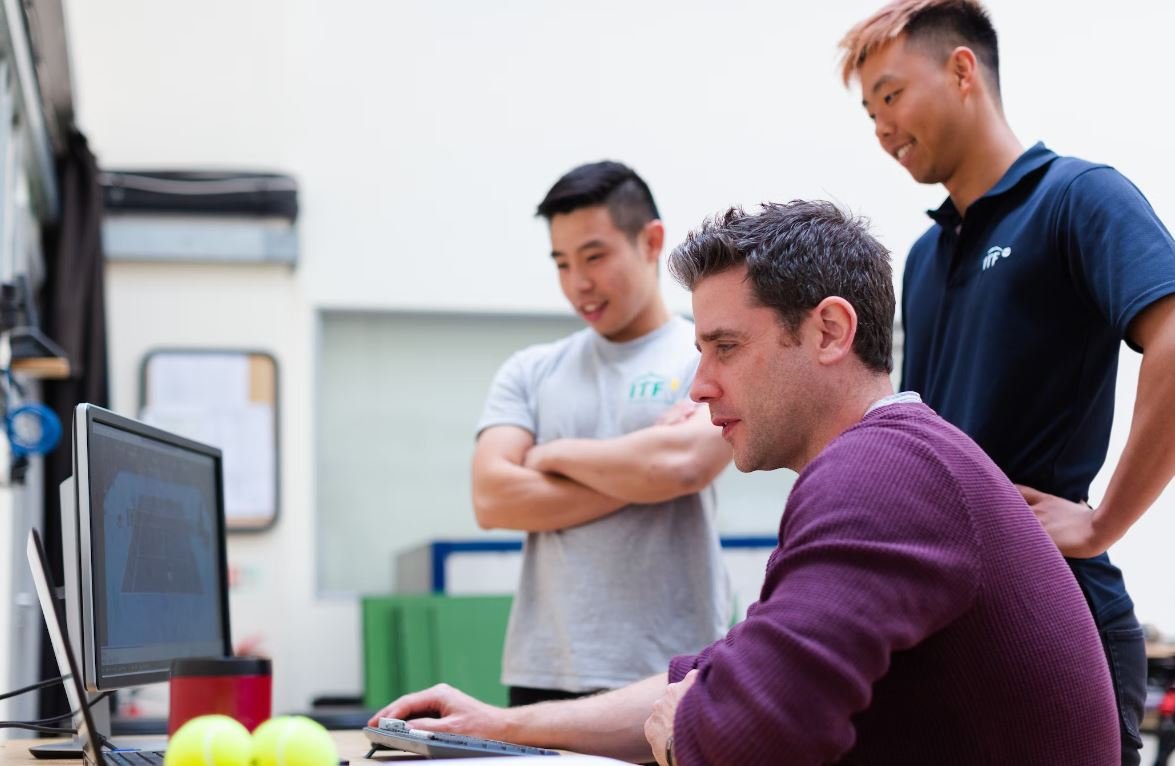Top AI Graphic Design
Artificial Intelligence (AI) has revolutionized many industries, and graphic design is no exception. With the advancement of AI technology, designers can now enhance their creativity and efficiency. AI-powered tools bring automation, speed, and precision to the design process, resulting in stunning outputs. In this article, we will explore some of the top AI graphic design tools that every designer should be aware of.
Key Takeaways:
- AI graphic design tools streamline the design process.
- AI tools offer automation, speed, and precision.
- Designers can enhance their creativity with AI-powered tools.
1. Canva
Canva is a widely popular graphic design tool that incorporates AI to offer an intuitive design experience. It provides a wide range of templates, images, and icons that users can easily customize to create professional designs. Its AI-powered feature suggests design elements based on the user’s preferences, making the design process more efficient and effective. *With Canva, even non-designers can create stunning visuals.
2. Adobe Sensei
Adobe Sensei is the AI technology integrated into various Adobe Creative Cloud applications, such as Photoshop and Illustrator. It enhances the graphic design process by automating repetitive tasks, suggesting edits, and assisting in complex design tasks. *By leveraging Adobe Sensei, designers can save time and focus more on their creativity.
3. Designhill’s Logo Maker
Designhill’s Logo Maker is an AI-driven tool that simplifies the logo design process. It uses machine learning algorithms to generate logos based on user preferences and industry-specific templates. Designers can quickly create custom logos with minimal effort, thanks to the smart layout suggestions and intuitive editing features. *Designhill’s Logo Maker is a powerful tool for businesses looking to create a professional identity.
AI Graphic Design Tools Comparison
| Tool | Features | Pricing |
|---|---|---|
| Canva | Wide range of templates, AI-powered suggestions | Free, subscription plans available |
| Adobe Sensei | Automation, smart editing suggestions | Included in Adobe Creative Cloud subscription |
| Designhill’s Logo Maker | Machine learning algorithms, smart layout suggestions | Varies based on logo requirements |
Benefits of AI Graphic Design Tools:
- Increased productivity and efficiency.
- Access to a vast library of design resources and templates.
- Automation of repetitive tasks saves time.
- Assistance in complex design tasks.
- Improved precision and accuracy in design outputs.
- Facilitates collaboration and sharing of design files.
Examples of AI-Enhanced Graphic Design:
- AI-powered image enhancement for compelling visuals.
- Automated background removal for professional product photos.
- Smart color selection based on brand guidelines.
- Automated text placement for aesthetically pleasing compositions.
Emerging Trends in AI Graphic Design:
- Generative Adversarial Networks (GANs) for creating unique designs.
- AI-powered design assistants for real-time feedback and suggestions.
- Integration of AI with virtual and augmented reality experiences.
Considerations for AI Graphic Design Tools:
- Ensure the tool aligns with your specific design requirements.
- Check for ease of use and user-friendly interfaces.
- Explore the pricing options and consider the tool’s value for money.
- Read user reviews and gather feedback from other designers.
Conclusion
AI graphic design tools are transforming the way designers create visuals. They provide automation, efficiency, and a wide range of design resources, enabling designers to unleash their creativity. By integrating AI into their workflows, designers can produce stunning designs, save time, and stay ahead of the competition.

Common Misconceptions
1. AI Graphic Design is just a passing trend:
One common misconception about AI graphic design is that it is just a passing trend that will soon become obsolete. However, the reality is that AI technology is here to stay and is continually evolving to improve graphic design processes.
- AI graphic design has become an integral part of many industries, including marketing, advertising, and web development.
- AI-powered graphic design tools streamline the design process, saving time and resources for businesses.
- AI can generate high-quality designs based on data analysis and user preferences, leading to better and more targeted visual content.
2. AI Graphic Design will replace human designers:
Another common misconception is that AI graphic design will completely replace human designers. However, although AI technology can assist in various design tasks, it cannot entirely replace the creativity and unique perspectives provided by human designers.
- Human designers bring emotional intelligence, intuition, and artistic insight to the design process, which AI algorithms cannot replicate.
- A combination of AI tools and human expertise can lead to more innovative and exceptional graphic designs.
- AI can help with repetitive tasks, allowing designers to focus on more strategic and creative aspects of their work.
3. AI Graphic Design lacks originality and human touch:
Some people believe that AI graphic design produces generic and soulless designs that lack originality and the human touch. However, AI technology has advanced significantly, and AI-powered systems can now create designs that are both original and visually appealing.
- AI algorithms can analyze and mimic various artistic styles, allowing for diverse and unique design outputs.
- AI systems can learn from existing designs and trends, enabling them to generate customized and personalized designs.
- Human designers can collaborate with AI tools to add their personal touch and make adjustments, ensuring the designs maintain the desired level of originality.
4. AI Graphic Design is expensive and inaccessible:
Many people assume that AI graphic design tools are expensive and inaccessible to the majority. However, with the advancement of technology and the increasing popularity of AI design solutions, they have become more affordable and accessible.
- Various AI graphic design tools, both free and paid, are available for designers of all skill levels.
- Freelancers and small businesses can benefit from lower-cost AI tools to create professional-looking designs without significant financial investment.
- AI-powered design platforms provide user-friendly interfaces and tutorials, making it easier for individuals to adopt and utilize these tools effectively.
5. AI Graphic Design eliminates the need for design education:
Some may assume that AI graphic design eliminates the need for formal design education since AI algorithms can generate designs automatically. However, design education remains crucial in understanding the principles and concepts that underpin effective graphic design.
- Design education equips individuals with the knowledge and skills to communicate visually, understand user experience, and think critically when creating designs.
- AI tools serve as valuable supplements to a designer’s education, enhancing their abilities and efficiency.
- Designers with a solid foundation in design education can leverage AI tools effectively to push creative boundaries and achieve excellent design outcomes.

Top 10 AI Graphic Design Tools
Artificial Intelligence (AI) has revolutionized the field of graphic design, making it easier than ever to create stunning visuals. From generating unique color palettes to designing eye-catching logos, these AI graphic design tools have become essential for designers. Below are ten remarkable tools that leverage AI technology to enhance the creative process and produce visually captivating designs.
1. Palette AI:
Palette AI is an innovative tool that uses AI algorithms to generate beautiful color palettes for any design project. By analyzing millions of images, Palette AI suggests harmonious color combinations, ensuring your designs are visually pleasing and engaging.
2. LogoGenius:
LogoGenius employs AI algorithms to design unique and professional logos. Simply input your brand name and a brief description, and LogoGenius will generate a variety of logos to choose from. With customization options available, you can easily adapt the design to fit your brand identity.
3. Typography Master:
Typography Master is an AI-powered tool that helps designers create captivating typography. By analyzing popular typography trends, this tool suggests font combinations, sizes, and placements that will enhance the impact of your text and make it visually appealing.
4. Image Enhancer:
Image Enhancer utilizes AI algorithms to enhance the quality of your images with a single click. This tool removes noise, sharpens edges, and adjusts color levels, resulting in stunning visuals that grab attention and leave a lasting impression.
5. Layout Generator:
Layout Generator is an AI-driven tool that suggests creative and unique layouts for print and digital designs. By inputting your content, this tool generates various layout options, optimizing the visual structure of your design and facilitating an effortless design process.
6. Brand Generator:
Brand Generator is an AI-powered tool that assists in creating cohesive brand identities. By analyzing your industry and target audience, it generates brand names, logos, color palettes, and even taglines that align with your brand vision, guaranteeing a strong and memorable brand presence.
7. Photo Manipulator:
Photo Manipulator is an AI tool that enables designers to effortlessly manipulate and edit images. From resizing and cropping to applying filters and effects, this tool offers a wide range of capabilities to elevate your visual storytelling.
8. Creative Idea Generator:
Creative Idea Generator is an AI-driven tool that sparks inspiration for your design projects. By analyzing popular design trends, this tool generates unique and innovative design ideas, ensuring your work stands out and captivates the audience.
9. Pattern Creator:
Pattern Creator harnesses AI algorithms to generate intricate and visually appealing patterns for your designs. Whether you need a pattern for textile design, web backgrounds, or branding elements, this tool offers a vast array of patterns that can be easily adapted to suit your needs.
10. Social Media Post Scheduler:
Social Media Post Scheduler is an AI-powered tool that helps you optimize your social media content. By analyzing the behavior of your audience and the best posting times, it suggests the most effective posting schedule, ensuring your content reaches the right people at the right time.
In conclusion, the emergence of AI in the field of graphic design has revolutionized the creative process. These ten AI graphic design tools empower designers to create visually stunning and impactful designs with ease. By leveraging the power of AI algorithms, designers can now enhance their creativity and streamline their workflows, resulting in designs that leave a lasting impression on the audience.
Frequently Asked Questions
What is AI in graphic design?
AI in graphic design refers to the use of artificial intelligence technology to automate various tasks and processes in the field of graphic design. It involves the use of algorithms, machine learning, and computer vision to generate, modify, or enhance visual content.
How does AI help in graphic design?
AI helps in graphic design by automating repetitive tasks, such as image resizing, background removal, and color adjustments. It can also generate designs based on user inputs or predefined templates, analyze visual elements for composition, and make recommendations for improvement.
What are the benefits of using AI in graphic design?
Using AI in graphic design offers several benefits, such as increased productivity and efficiency, consistent and high-quality outputs, faster turnaround times, and the ability to explore and experiment with different design options. It also enables designers to focus more on creative aspects by offloading mundane tasks to machines.
Can AI replace human graphic designers?
No, AI cannot completely replace human graphic designers. While AI can automate certain tasks and assist designers in their work, it lacks the human creativity, intuition, and emotional intelligence required for original and impactful design ideas. Human designers are still needed to provide the artistic touch and critical thinking in the design process.
What are some examples of AI tools in graphic design?
Some examples of AI tools in graphic design include content-aware fill, which automatically removes and replaces unwanted elements in images; style transfer, which applies artistic styles to images or designs; and generative adversarial networks (GANs), which can create realistic images based on given parameters or datasets.
How can AI improve the design workflow?
AI can improve the design workflow by automating repetitive and time-consuming tasks, such as image editing and retouching. It can also analyze user preferences and behavior to provide personalized design recommendations and suggestions. AI-powered design collaboration platforms can facilitate efficient team collaboration and version control.
Is AI in graphic design accessible to non-technical users?
Yes, AI in graphic design is increasingly becoming accessible to non-technical users. Many AI-powered design tools and platforms offer user-friendly interfaces and pre-defined templates that can be customized without any coding or technical knowledge. These tools enable individuals with limited design skills to create visually appealing content.
Does AI in graphic design have any limitations?
Yes, AI in graphic design has certain limitations. While AI algorithms can generate designs, they lack the context, cultural understanding, and human emotions necessary for creating truly meaningful and impactful designs. AI tools also heavily rely on the quality of input data and may produce biased or suboptimal results in some cases.
What ethical challenges are associated with AI in graphic design?
AI in graphic design raises several ethical challenges, such as plagiarism and intellectual property concerns when AI-generated designs resemble existing copyrighted works. There are also concerns about the potential for job displacement among graphic designers and the need to ensure transparency and accountability in AI algorithms to avoid biased or discriminatory outputs.
How can one get started with AI in graphic design?
To get started with AI in graphic design, one can explore AI-powered design tools and platforms that offer free trials or affordable subscription plans. It is also beneficial to learn the basics of AI technologies, such as machine learning and computer vision, and understand their application in graphic design. Online tutorials and courses can provide valuable guidance in acquiring these skills.




